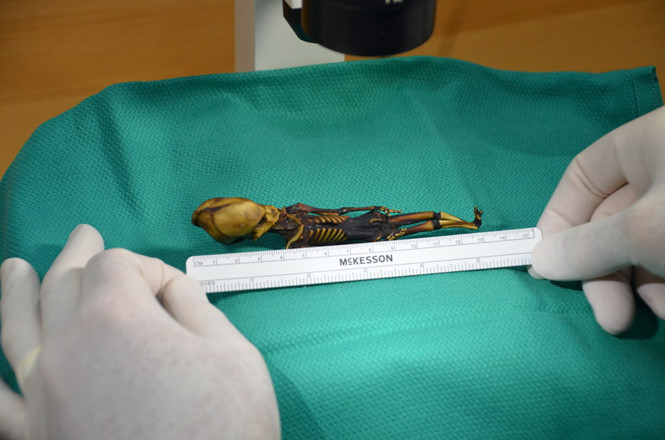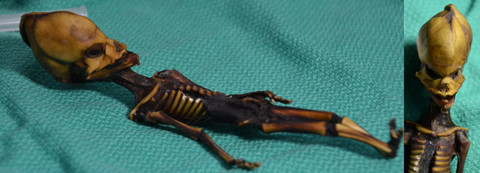A Chilean newspaper reported that the remains were discovered on October 19, 2003, by a man named Oscar Munoz, who was digging for historically valuable artifacts in La Noria, a remote, uninhabited town in the Atacama Desert.
Many people at some point in their lives have looked up at the starry sky and wondered how much truth lies beyond it. How far does life extend beyond our blue planet? Do aliens really exist? We all have a little bit of belief. About 20 years ago in the Atacama Desert of Chile, the remains of a humanoid figure approximately 15 cm long were found, and this discovery led many to believe that extraterrestrials exist and are living on Earth alongside us.
However, over time and with advancements in science and technology, these remains were examined by scientists at Stanford, and the results were quite disappointing for the science fiction community—the skeleton actually belonged to a human rather than an alien species.
The AFP reported that scientists have recently concluded that the skeleton “tiny human” measuring about 15 cm, which had sparked much speculation, was actually the skeleton of a human with a genetic mutation.

The skeleton found in a desert in Chile. (Photo: AFP).

Close-up of the skeleton that sparked much speculation. (Photo: AFP).
The skeleton was discovered in La Noria, a town in the Atacama Desert of Chile, in 2003 and was named Ata.
Initially, many believed it to be an ancient skeleton, but analysis in 2012 revealed it was only about 40 years old, meaning its DNA could still be analyzed.
With its unusually small size and bone structure resembling that of a 7-year-old child, Ata gained notoriety and inspired numerous theories about aliens. The skeleton had only 10 pairs of ribs instead of the usual 12 pairs found in normal humans, adding to the mystery.
Based on five years of genetic analysis, scientists determined that Ata was the skeleton of a genetically mutated girl who may have been born prematurely. The results also indicated that she was a girl of South American descent.
The skeleton is owned by a Spanish archaeological collector. Scientists are urging this individual to return the skeleton to Chile for proper burial according to local customs.

















































